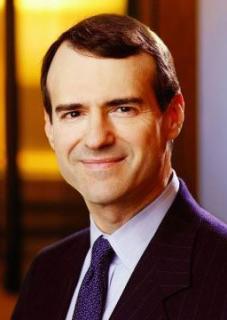Category Archives: Jewish Denominations
Rabbi David Wolkenfeld on why it’s important for committed Jewish students to be connected on-campus
“To regain its vitality and become a central force for meaningful Jewish living, Conservative Judaism must focus on shaping Jews who will live the values, ideologies and teachings that are the core of its mission”
“The Conservative movement has been fairly effective in educating congregants as to the evolving nature of halacha. We have not yet met our goal of inspiring them to understand that halacha is, indeed, binding”
“Compromise and consensus frequently governed choices” for Conservative synagogues in the mid-20th century with Consequences
In the middle of the last century, the Conservative movement made the decision to become the “Movement of the People.” Conservative synagogues opened their doors and welcomed a broad base of Jews who were seeking to identify with a congregation that blended tradition and modernity. Although the Conservative movement had a distinct theological and ideological approach, it was not theology or ideology that motivated most adherents. It was, rather, the “style” of the religious services and programs that generated enthusiasm. In order to make themselves attractive to the widest possible segment of the community, many congregations made an implicit decision not to define themselves too precisely. The prevailing attitude reflected the belief that every Jew should be able to find something within the congregation with which he or she felt comfortable. More significantly, however, the premise that reigned was that as few members as possible would feel uncomfortable. Rarely was there an attempt to define the synagogue vision, mission, ideology or approach to religious life too specifically for fear of causing people to feel excluded.
As a result, leaders often made decisions based upon programs or positions that had the potential to attract the greatest numbers. Compromise and consensus frequently governed choices. Those who were satisfied with this approach retained their membership, whether or not they actively participated in congregational life. Those who wanted that which Conservative Jewish ideology promised but often did not deliver, however, went elsewhere. Ironically, many adults who have studied traditional Jewish sources and were moved to seek a serious Jewish community, committed to what Conservative Judaism promoted in terms of Jewish living, were forced to find it outside of the movement.
Rabbi Jerome Epstein, “Key to Conservative Survival: Returning to Our Core”, The Jewish Week (18 April 2014), 20.
“Modern Orthodoxy is Modern. But it is also Orthodoxy.”
“The existence of agunot is the ugliest moral scar on the face of Orthodox Judaism, bar none”
Rabbi Jonathan Sacks believes that Modern Orthodox Jews will be leading the American Jewish Community
This gallery contains 0 photos.
“It has become really clear that Orthodoxy is the only element of the Jewish...Considering the failure of acknowledging Patrilineal Descent for the Reform Movement
In 1983, the Reform Movement made the decision to grant any child born of a Jewish father automatic membership in the Jewish People, a policy otherwise known as patrilineal descent. Indeed, the decision of the Central Conference of American Rabbis was truly radical: it “transformed the halachic formulation of ‘the child of a Jewish mother’ to the ‘chile of a Jewish parent’” in delineating the transmission of Jewishness from one generation to the next; moreover, it stipulated that no child, whether born of a Jewish father or mother, was officially Jewish until he/she complete a bar/bat mitzvah or engaged in public acts or ceremonies of Jewishness. The impact was immediate: conversions to Judaism dropped by 75%. Following the patrilineal descent decision, only 5% of non-Jewish fiancé(e)s in prospective intermarriages converted to Judaism. The ancient Jewish club now had some members who did not recognize other club member, creating confusion. Worse still, the overwhelming majority of those granted this new club membership threw away their membership cards. As a result, membership in the Jewish club has been profoundly devalued.
Though the Reform Movement instituted patrilineal descent as a means to combat the problem of poor Jewish identity among children of intermarriage, the result has been the exact opposite. Among the 30% of mixed marriages who are raised as Jews, the vast majority had Jewish mothers. Even when the Jewish parent desires to raise the children as Jews, this is only likely to happen when the Jewish parent is a woman. This may seem surprising since the child of a Jewish father most often carries the father’s name and is frequently assumed to be Jewish by acquaintances. Nevertheless, the factual evidence is clear: whether by virtue of genes, tradition or culture, Jewish mothers are much more effective at transmitting Judaism to their children than Jewish fathers even if they so desire.
Scott A. Shay, Getting Our Groove Back: How to Energize American Jewry, 2nd ed. (Jerusalem & New York: Devora Publishing, 2008), 155.

